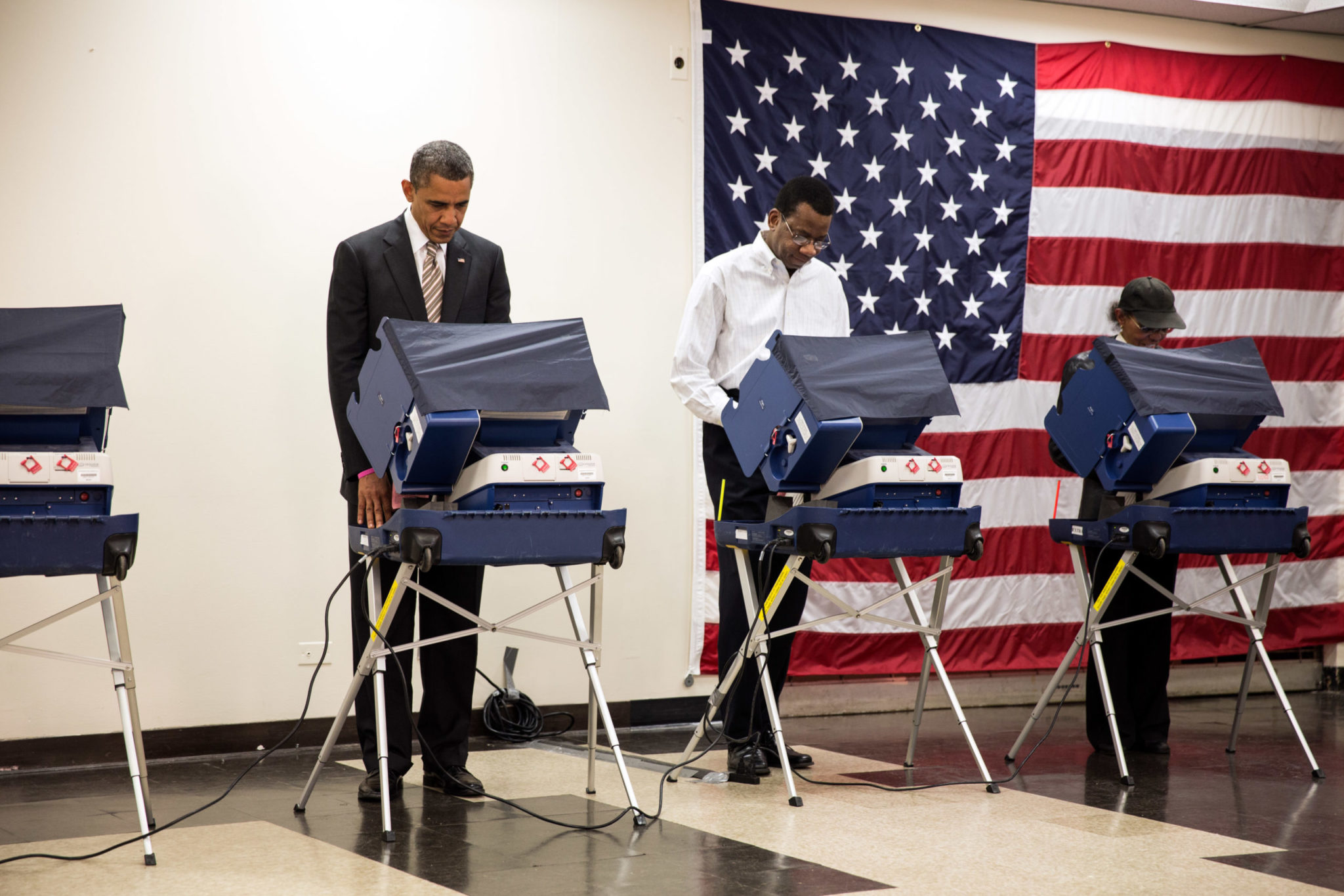
During the 2000 presidential election, election boards tossed millions of punch card ballots for inaccuracies — throwing close races like Florida into recount chaos. Officials across the country scrambled to replace outdated paper punch cards with new forms of computerized election technology.
Now, America is returning to paper balloting — which, this time around, experts say could make this election more secure than ever. However, according to Verified Voting, a nonpartisan organization whose mission is to “strengthen democracy for all voters by promoting the responsible use of technology in elections,” the nation is still a patchwork of different voting systems sold by competing companies, meaning that voting securely is still not a given.
The News explored three major voting systems used in the United States, which can also be analyzed on this map produced by Verified Voting. For its part, Connecticut — along with 28 other states — exclusively uses paper ballots with optical scanners.
Direct Recording Electronic machines
The Help America Vote Act, passed by Congress in 2002, gave state and county jurisdictions access to federal dollars for the purpose of buying new machines. According to Verified Voting, Direct Recording Electronic, or DRE, machines, which collect and record votes electronically, were adopted in many counties, especially those in southern states. Over time, however, officials began sounding the alarm about the security of DREs. According to Stephanie Singer ’85, the former chair of the Philadelphia County Board of Elections, DREs are dangerous because officials and voters cannot verify their results, making them vulnerable to outside attacks.
“Anytime there’s a computer in the process, you have to audit what it does,” Singer said.
During her term, Singer tried to replace Philadelphia’s aging machines with hand-marked paper balloting systems. According to Singer, the other members on the city’s election commission were not interested in her proposal.
Some DRE machines were outfitted with Verified Voting Paper Audit Trail, or VVPAT, printers in an attempt to increase verification capabilities. According to professor of computer science Michael Fischer, however, DREs, even those with VVPAT, are still flawed.
“Experience [shows] that many voters found the cash-register-like VVPATs difficult to read and verify, causing doubt that the paper really reflected voter intent,” Fischer told the News. “They are also difficult for election officials to handle and use for an audit or recount.”
Verified Voting’s map tool shows that DREs are still used in parts of Indiana, Louisiana, Kentucky, Kansas, New Jersey, Tennessee and Texas.
Ballot Marking Devices
Ballot Marking Devices, or BMDs, were originally designed for voters with disabilities in states that used hand-marked ballots. In some states, however, BMDs entirely replaced older DREs. According to Verified Voting, these machines, though similar to DREs in their electronic interfaces, print out marked ballots based on the voter’s choices rather than storing them electronically. Voters are then encouraged to verify their printed ballots before submitting them to be counted. According to Fischer, however, BMDs, many of which print bar-coded ballots, do nothing to increase election security over DRE+VVPAT systems.
“While the bar-coded ballots can be recounted during an audit, the bar-coded ballot is completely unreadable by voters, who have no ability to verify that the ballot reflects their intended choices,” he said.
In 2019, Fischer joined other computer science and election experts from across the country to write a letter addressed to state officials in Georgia, arguing that BMDs were not a secure option and urging them to institute state-wide hand-marked paper ballots. Nevertheless, Georgia — which has a history of close elections that could not be recounted or verified due to its DRE machines — chose to move forward with the purchase of BMDs for statewide use.
According to Singer, the Philadelphia Board of Elections ultimately chose to replace their DREs with BMDs. She agrees that the switch was “less-than-ideal,” and went on to suggest that corporate lobbying from voting machine companies can influence how election officials make decisions.
“My best guess is that there was very savvy lobbying by the companies that make machines, that took advantage of [government officials’] relative lack of technical sophistication,” Singer said.
BMDs are the primary machines used in Arkansas, Delaware, Georgia and South Carolina, as well as large sections of Texas, Pennsylvania, Ohio and West Virginia, according to Verified Voting.
Hand-Marked Ballots and Optical Scans
Despite the proliferation of digital election infrastructure, both Fischer and Singer agreed that paper ballots, which include both mail-in and in-person ballots, remain the best option.
“The most secure ballots are paper ballots that are deposited in official ballot boxes in one’s own voting district jurisdiction,” Fischer said.
In this election, Fischer chose to personally deliver his paper ballot in Hamden, CT. Singer, who teaches at Portland State University, voted with a mail-in ballot, which Oregon sends to all registered voters.
Professor of political science Gregory Huber noted that optical scanning machines, which digitally tally votes by analyzing the surface of hand-marked and paper ballots, are among the most popular voting technologies in the United States. Optical scan ballots are the least likely to be subject to outside influence, Huber said.
“There is a physical paper trail that can be audited after the fact,” Huber said. “Someone can run the ballots through a different counting machine, or instead count them by hand. By contrast, in ‘all digital’ machines, there is no direct way to guarantee that the ballot as counted represents what a voter chose.”
Though some small jurisdictions across the country count hand-marked ballots by hand, Connecticut is among the 29 states that exclusively use optical scanners to assess hand-marked ballots. In-person BMDs are still provided as accessible options.
The coronavirus pandemic has prompted many states, including Connecticut, to expand absentee voting policies, allowing record numbers of people to cast ballots by mail.
Singer warned, however, that even hand-marked paper ballots are not without flaws. In many states, such as Minnesota, mail-in ballots received after election day will not be counted. Voters also navigate a set of complicated rules about secrecy envelopes and signature matching, causing confusion that Singer says amounts to a “literacy test.”
“It is such a burden to put on the voters.” Singer said. “Every ballot that arrives at the Board of Elections that isn’t counted is a tragedy. It’s heartbreaking.”
Polls in New Haven will close at 8:00 p.m. ET on Nov. 3.
Isaac Yu | isaac.yu@yale.edu






